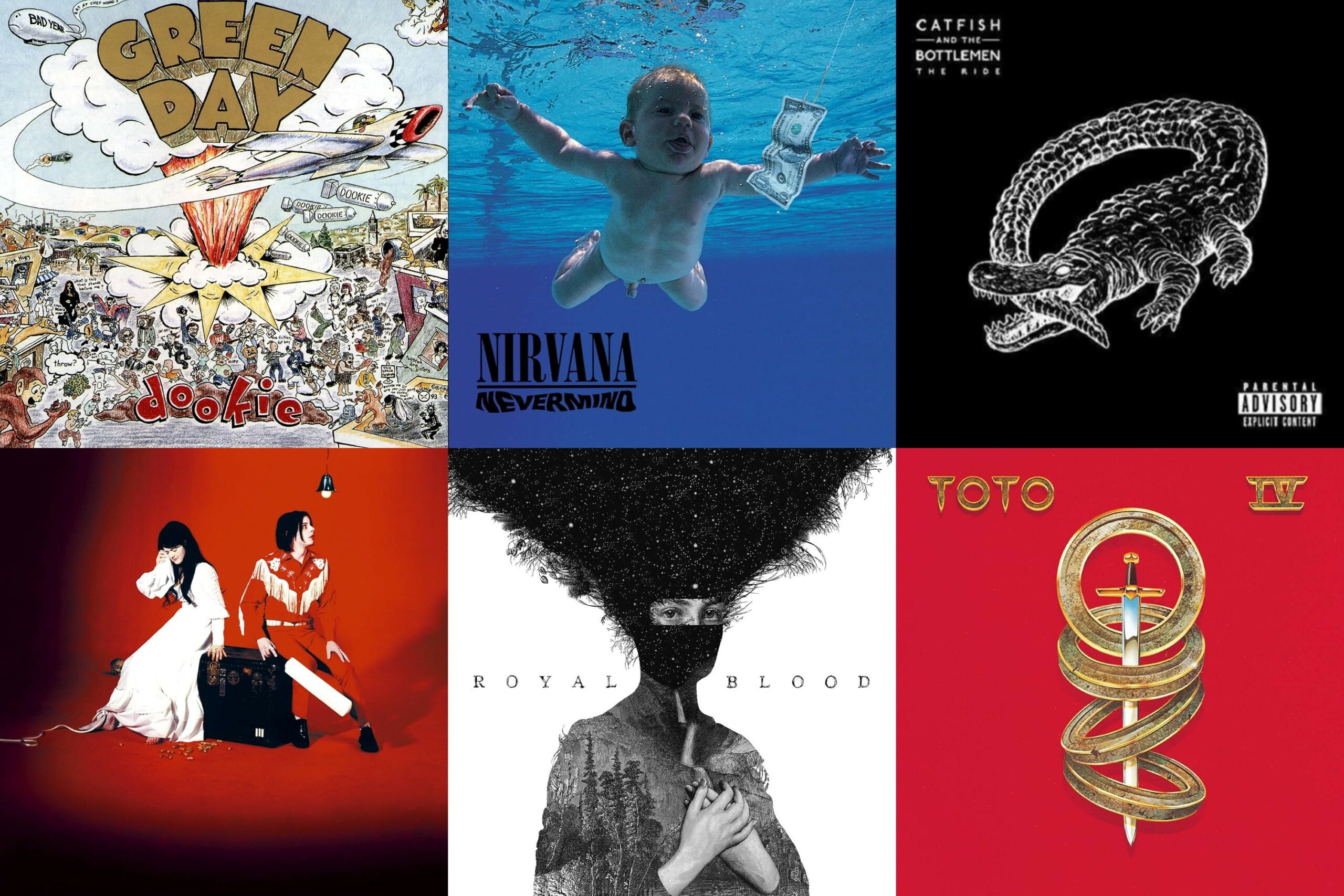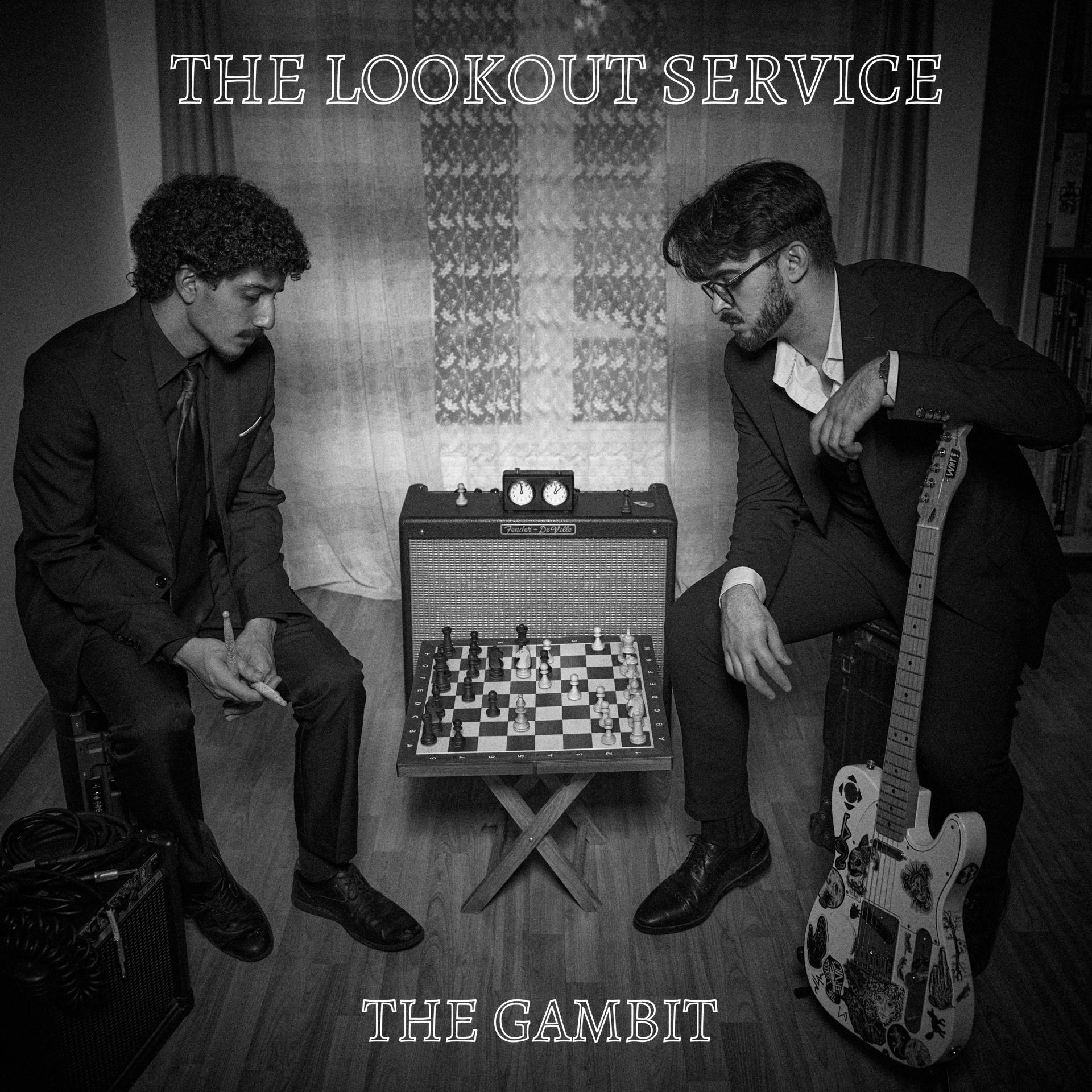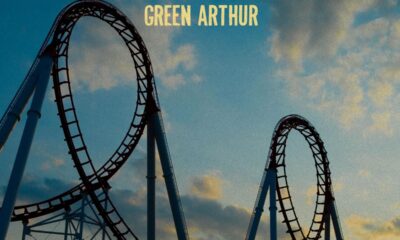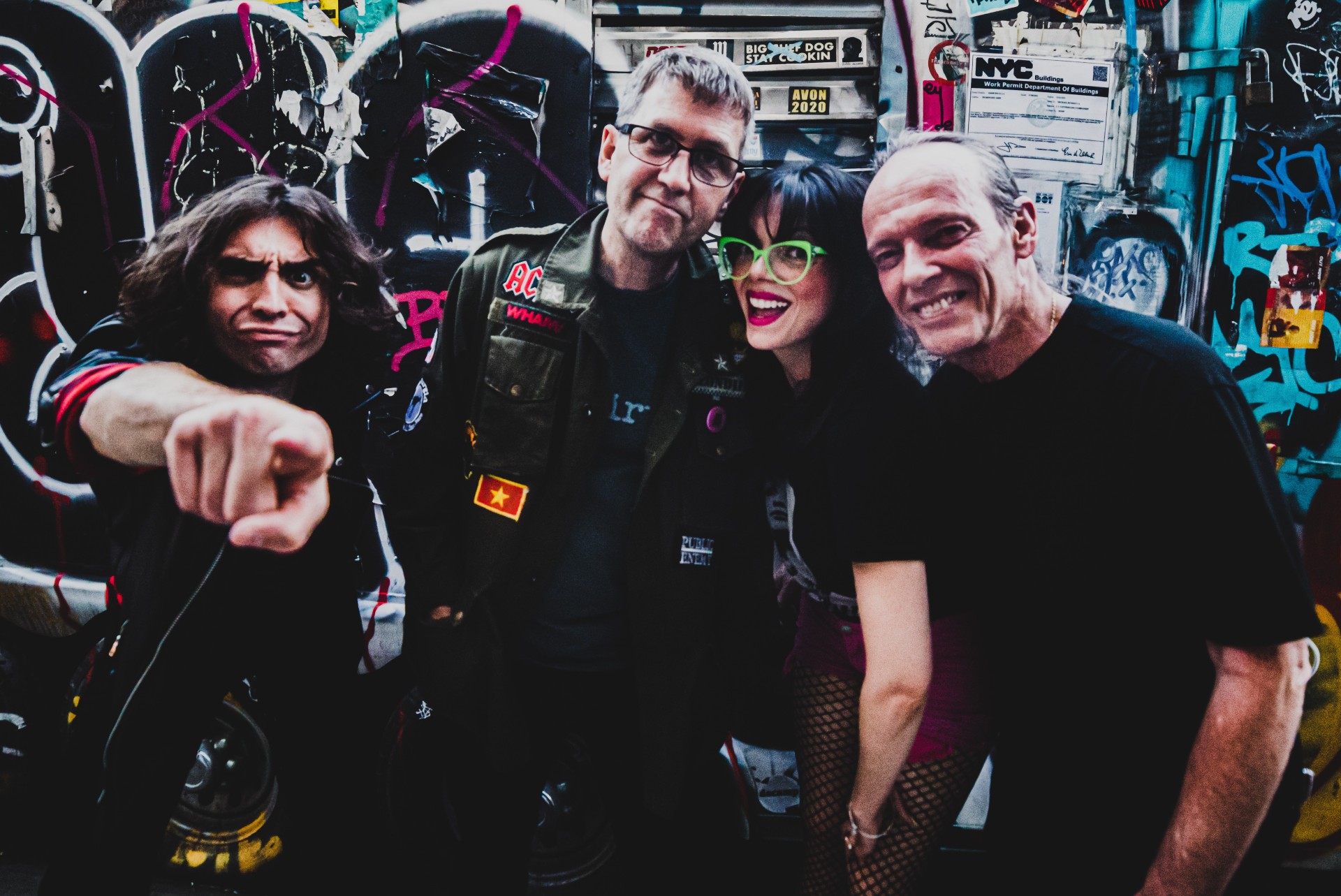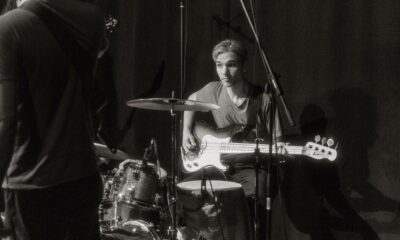Features
Stereo Six: The Lookout Service Sift Through Some of Their Favourite Records
The Lookout Service lead singer and guitarist, Stergios Kalochoridis, joins us for a Stereo Six to sort through six of his favourite records.

You have your whole life to release your debut album, so you may as well take the time to get it right, an approach taken by The Lookout Service. Earlier this month, the Toronto alternative band released their debut full-length, The Gambit. It comes after years of hard work to get to this point, with the group first forming in 2018. Singer and guitarist Stergios Kalochoridis and drummer Robert Ragazzo are the brains behind the operation. Each song on The Gambit was strategically written and recorded with the bigger picture in mind when recording each track.
What’s evident throughout the record is that The Lookout Service has a human touch regarding songwriting. There’s a storyteller aspect to these tracks, with poignant narratives throughout, sewing together a greater appraisal of the complexity of the human experience. Musically, it’s diverse, from slow grooves to wilder onslaughts of heavy guitars. There are also introspective lyrics amidst the atmospheric melodies and sharp guitar solos. Kalochoridis and Ragazzo have woven together a diverse record that is also very accessible.
The Lookout Service’s Stergios Kalochoridis joins us for our latest Stereo Six. He discusses six influential records in the writing and recording of The Gambit.
1. Green Day – Dookie (1994, Reprise Records)
“This album was particularly influential on Rob’s drumming across some of the heavier songs on the album. The open hi-hat grooves of ‘Basket Case’ and ‘When I Come Around’ directly influenced the rhythms and fills of multiple songs on our album. Mike Dirnt’s bass playing also had a big impact on me when I started playing music at 16. A lot of the guitar riffs that I come up with are very bass-oriented (‘BMFR,’ ‘Rough Around The Edges’). Songs like ‘Daffazank,’ ‘Moving Away,’ and ‘BMFR’ have some heavy Dookie influence, especially on the drum parts of those songs. According to Rob, lots of the drum fills on Dookie are extremely fun to play. You can never have too many punk rock influences so we’re definitely going to give the album the nod.”
2. Nirvana – Nevermind (1991, DGC Records)
“Similarly to Dookie, Nevermind was a staple album that both Rob and I listened to for years growing up. The album had an undeniable attitude that we resonated with and to this day is incredibly unique. Songs like ‘In Bloom’ and ‘Smells Like Teen Spirit’ are songs that we used as references for the way we wanted the drums to sound on our record. We wanted the record to sound as wide as possible. Going into recording we tried to capture some of that essence that was on Nevermind.
“Dave Grohl continues to influence the both of us, whether it be his drumming in Nirvana or his guitar playing and songwriting in the Foo Fighters. Undeniably one of the greatest rock artists that we’re lucky enough to be able to still go and see tear up the stage live.”
3. Catfish and the Bottlemen – The Ride (2016, Island Records, Capital Records)
“This album is to this day one of those records that I could sit and listen to top to bottom, and strum along to each tune on my guitar. It was one of the first records that I truly fell in love with because I could play along to it on guitar and work out how to sing the melodies.
“On our album, every rhythm guitar part with overdriven guitars probably in some way was me trying to emulate the guitar sounds on a Catfish record. The reason I got a Telecaster as my first guitar (which ended up being played on almost every song on the record) was because Van McCann played one. His lyrics showed me that it was cool to be myself and to write songs from my own perspective.
“A lot of artists pretend to be someone else or sing for someone else, and usually connect better with audiences in doing so. But I wanted this record to be from me and about my experiences. Hopefully, others connect with some of the lyrics, but at the end of the day, I’m happy even if they don’t. It’s safe to say that this record had a massive impact on our new record and the way I approach music in every respect.”
4. The White Stripes – Elephant (2003, V2, XL, Third Man Records)
“The White Stripes’ Elephant made it ok to be a two-piece band. I listened to this record and concluded that if Jack and Meg White could do it, then so could we. Jack’s use of a whammy pedal to hit high octaves during solos, or to hit lower octaves to thicken the bass frequencies, drove me to craft a rig that could manipulate multiple octaves during live performances. It ended up being the foundation on which we built our band on.
“His use of fuzz pedals to compress and distort his guitar definitely impacted the tone of our more aggressive songs on the album (‘BMFR,’ ‘I Am The Dragon,’ ‘Rough Around The Edges’). The stabby and punchy rhythms and solos resonated very well with me. I was a self-taught guitarist (so I couldn’t play anything fancy) and they conveyed a shoot-from-the-hip attitude that I wanted to do as well on our album.”
5. Royal Blood – Self-Titled (2014, Warner Bros. Records)
“For me, this was the album that had that modern sound that seemed to be the next step in rock. After having seen them live late last year, I truly believe that they are one of the best rock bands of today. The driving in-your-face sound of Royal Blood, combined with the incredible talent of both band members, was something that inspired me to try to create a record that could dip into that new energy. I feel like their tone is very bass-driven (probably because Mike Kerr plays a bass) and was one of the reasons why I decided to start using a big bass amp.
“I wanted to be able to be versatile when playing live, play lighter and more intricate/melodic guitar parts, and then be able to re-introduce the heavy tones like Royal Blood does. Because of this band and this record, my live rig went from a small ten-watt combo amp and a distortion pedal to three amps with a total of 16 speakers, loads of pedals, and super thick guitar strings to emulate a more bass-like tone on a guitar.”
6. (Curveball) Toto – Toto IV (1982, Columbia Records)
“For our curveball, we decided to go with the TOTO IV album, specifically the song ‘Rosanna.’ The half-time shuffle in this tune helped craft the main verse groove of our song ‘Exodus.’ Also the intro rhythm in the first verse of our single, ‘I Am The Dragon.’ If you take a look at the comments section of any video footage of ‘Rosanna’ on YouTube, the top comments always have to do with Jeff Porcaro’s drumming. I think it’s important to listen to music outside your genre because you can always blend different musical ideas to create something new. When Rob started playing the half-time shuffle beat for the first time, I knew that the foundation of our song had been laid and that the track would get people grooving.”
-

 Music7 days ago
Music7 days agoTake That (w/ Olly Murs) Kick Off Four-Night Leeds Stint with Hit-Laden Spectacular [Photos]
-

 Alternative/Rock22 hours ago
Alternative/Rock22 hours agoThe V13 Fix #011 w/ Microwave, Full Of Hell, Cold Years and more
-

 Alternative/Rock1 week ago
Alternative/Rock1 week agoThe V13 Fix #010 w/ High on Fire, NOFX, My Dying Bride and more
-

 Features7 days ago
Features7 days agoTour Diary: Gen & The Degenerates Party Their Way Across America
-

 Culture1 week ago
Culture1 week agoDan Carter & George Miller Chat Foodinati Live, Heavy Metal Charities and Pre-Gig Meals
-

 Music1 week ago
Music1 week agoReclusive Producer Stumbleine Premieres Beat-Driven New Single “Cinderhaze”
-

 Indie22 hours ago
Indie22 hours agoDeadset Premiere Music Video for Addiction-Inspired “Heavy Eyes” Single
-

 Alternative/Rock2 weeks ago
Alternative/Rock2 weeks agoThree Lefts and a Right Premiere Their Guitar-Driven Single “Lovulator”

